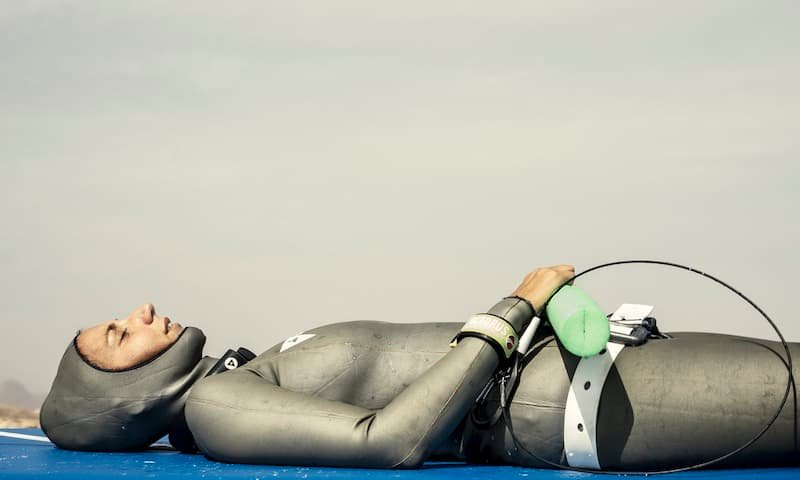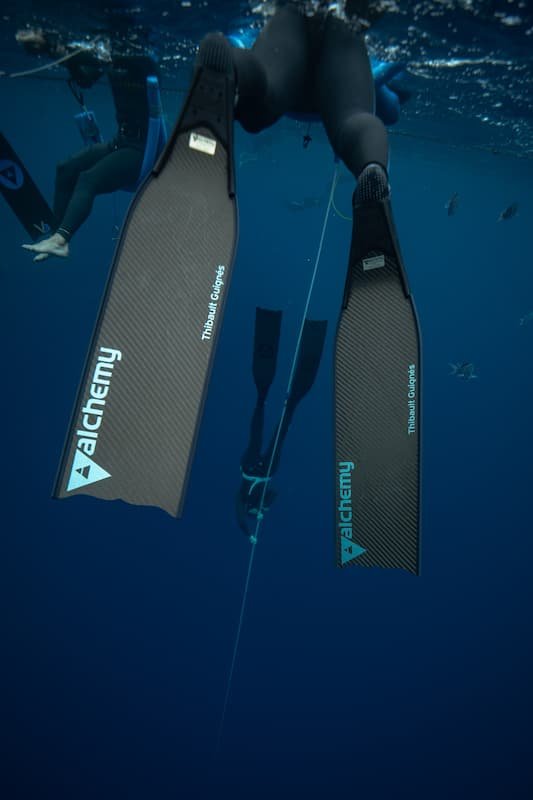
 Nick Pelios
Freediver, Creator
Nick Pelios
Freediver, Creator

 Nick Pelios
Freediver, Creator
Nick Pelios
Freediver, Creator
Freediving, the art of exploring the underwater world with a single breath, is an exhilarating and challenging sport that demands a unique set of skills. One of these essential skills is equalization, the process of balancing pressure within the ears as you descend into the depths. In this article, we will delve into the world of Frenzel equalization, a critical technique for freedivers, and explore why mastering it is essential for a successful and safe dive.
Frenzel equalization is one of the two primary methods used for equalizing pressure in freediving, with the other being Valsalva equalization. To distinguish between the two, it's important to understand the basic principles of each:
Valsalva Equalization: This method involves exhaling against pinched nostrils or contracting your abdominal muscles to push air from your lungs into your nasal cavity, which is then used to equalize the pressure in your middle ear. While Valsalva equalization is effective in many situations, it becomes increasingly challenging as your lung volume decreases during deeper dives.
Frenzel Equalization: Frenzel equalization, on the other hand, relies on contracting the tongue and throat muscles to push air from your mouth into your nasal cavity, ultimately equalizing the pressure in the middle ear. Both Valsalva and Frenzel require pinched nostrils, contrary to a common misconception that Frenzel allows equalization without pinching the nostrils.
The primary advantage of Frenzel equalization lies in its effectiveness and gentleness, making it a preferred choice for deep freedives. With practice and proper technique, Frenzel equalization can take you down to impressive depths.

Before we dive into the details of Frenzel equalization, it's essential to understand the key anatomical components involved:
Vocal Fold (Glottis): The vocal fold consists of muscles around your vocal cords, separating your oral cavity from your thoracic cavity (lungs). When you close the vocal fold, you prevent the air in your mouth from escaping into your lungs.
Soft Palate: This soft, flexible tissue separates your oral cavity from your nasal cavity. It plays a crucial role in directing the flow of air based on whether you breathe through your mouth or nose. To achieve Frenzel equalization, you need to coordinate the closure of the vocal fold and the position of the soft palate in your mouth.

Mastering Frenzel equalization requires practice and precision. Here's a step-by-step guide to help you develop this crucial skill:
Identify Your Equalization Method: To determine whether you are using Valsalva or Frenzel, place your hand on your upper abdominals (between the ribs and the solar plexus) and perform a natural equalization. If you feel your abdominal muscles contract, you are likely using Valsalva. If not, you may already be using Frenzel.
Familiarize Yourself with the Vocal Fold and Soft Palate: Learn to control your vocal fold and soft palate. Open your mouth wide and stick out your tongue. You will notice that your vocal fold closes, preventing air from escaping your lungs.
Exercises for Soft Palate Awareness: Practice inhaling through your mouth and exhaling through your nose. Pay attention to the movement of your soft palate as it directs the airflow.
Choose a Frenzel Position: There are three main tongue positions for creating a seal with the roof of your mouth: T, K, and H.
T Position: This is when the front of your tongue contacts the front of the roof of your mouth. Equalize with your tongue in the T position, and when you release, you should make the sound of “T."
K Position: In the K position, the middle of your tongue contacts the middle of the roof of your mouth. Release your tongue to make the "K" sound.
H Position: This position involves the back of your tongue contacting the soft palate at the back of your mouth. It allows you to equalize even with your tongue extended.
Practice Tongue Movements: Work on the coordination of your tongue movements. With your tongue extended, practice moving it in and out while keeping the back of your tongue elevated.
Swallowing Exercise: Swallow several times with your nose pinched. Pay attention to the sensation of the throat and the back of the tongue rising.
Mastering Frenzel with Stomach Sucked In: Exhale gently and suck in your stomach, creating a stomach vacuum. While maintaining the vacuum, perform a Frenzel equalization using the T, K, or H position. This exercise ensures that you're using air in your mouth and not from your lungs.

If you're still struggling with Frenzel equalization, don't be discouraged. Learning this skill can take time. Practice the exercises outlined in this guide repeatedly, and don't hesitate to seek advice from experienced freedivers. Remember, the key to mastering Frenzel equalization lies in developing muscle coordination, control, and awareness.
Frenzel equalization is a critical skill for freedivers, enabling them to explore greater depths safely and comfortably. As you progress in your freediving journey, you'll discover that Frenzel equalization is a valuable tool that enhances your underwater experience, making it more enjoyable and rewarding. With dedication and consistent practice, you can become proficient in this essential technique and unlock the full potential of your freediving adventures.